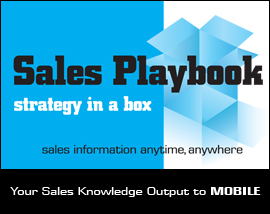Tips to Prepare for the Future of Selling

There’s no doubt the sales landscaping is changing, and with change sales people must adapt accordingly.
The number of salespeople is going to go down dramatically in the near future. The reason for this is because the sales profession has had to change, not in a dramatic fashion but in a professional fashion – sales people are going to have to become more “business people.” At one point we thought of sales people as social, relationship builders. This is still going to be important but they’re also going to have to have a great amount of business knowledge to bring to their customer in a way that can solve problems. They’ll have to re-think their approach, and maintain a “uncover, understand & solve” perspective; the social aspects are still important, but it’s this piece that is really becoming critical. They need to be a resource to their customers by uncovering their problems, their marketplace competitors, and the areas where they are at threat through strategic diagnostic questions and research.
The understanding component is the idea of helping your client and their organization understand how they can resolve the problems you have uncovered. How can you influence your client’s customers in a way that’s going to drive business back to your client? The hard part of this is communicating the understanding, as sometimes (a lot of times) clients don’t know what their issues are. They may know they have issues but they usually don’t know what they are or how to resolve them.
Solve is how you actually work to resolve the issues (i.e. what you implement). The hard part becomes doing it in a way where there is collaboration to create a solution that’s going to give a competitive marketplace advantage. This co-creational process is all about converting your insight into action for their organization. Ideally, you will apply your insight to your customer’s problems and offer choices, showing them the consequences of each clearly.
The sales world is moving away from the tactic of presenting a solution to potential customers and seeing if it fits into their needs, and towards a more fluid, co-creation of alternative solutions that create competitive differences!


